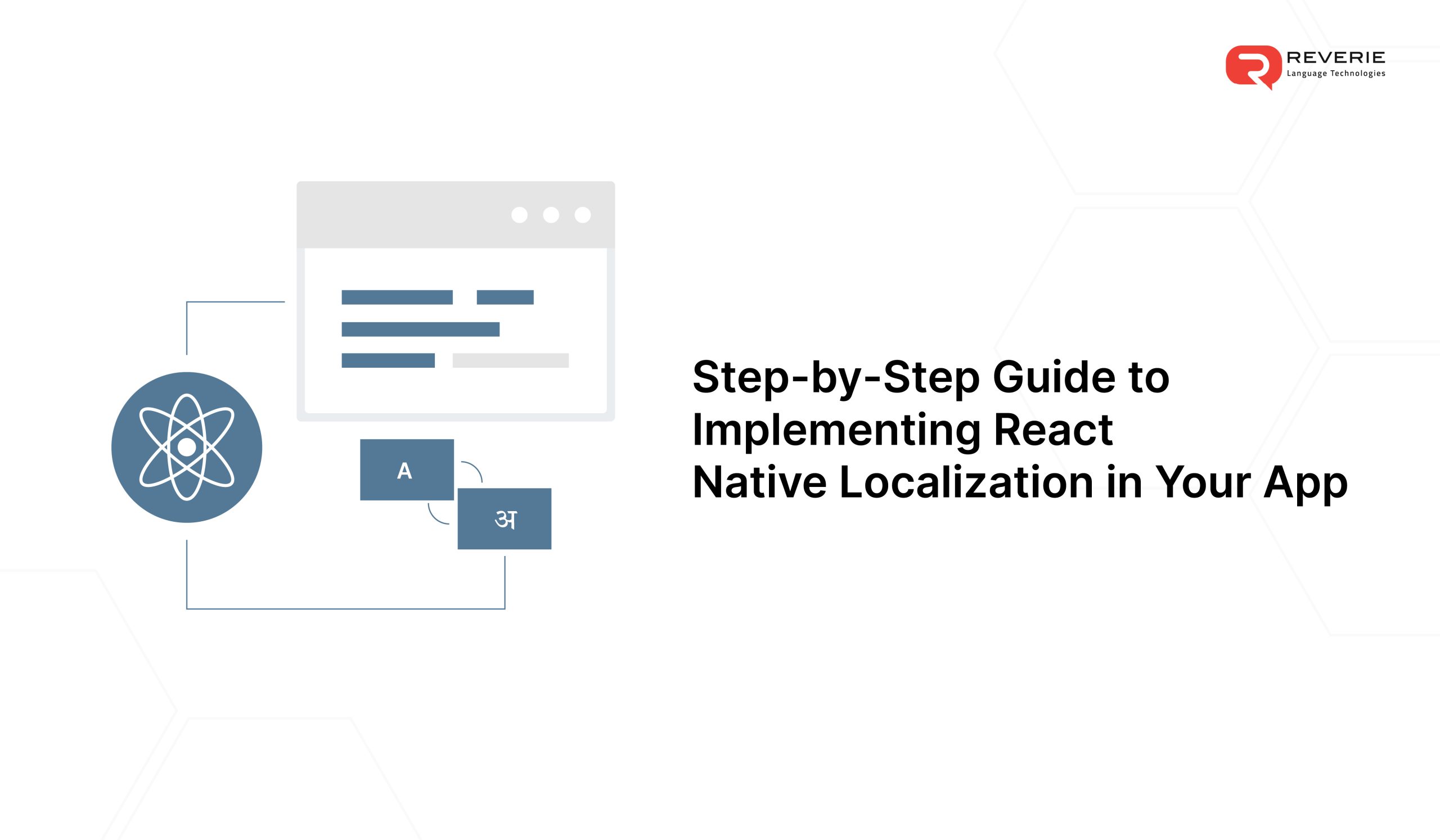The global app market is expanding rapidly, with non-English-speaking users driving the next wave of digital adoption. India alone has over 900 million internet users, yet many apps fail to cater to regional language preferences, leading to lower engagement and customer drop-offs.
For instance, a fintech platform aiming to serve India’s tier-2 and tier-3 cities struggles with low adoption rates because its interface and financial terms are only available in English. Similarly, an e-commerce app offering fast deliveries in local markets sees high cart abandonment rates due to non-localised payment options and date formats. These missed opportunities highlight the importance of precise app localisation.
React Native localisation simplifies multilingual app development, enabling businesses to expand globally without rebuilding applications for each market. This structured guide explores the core concepts and step-by-step process to implement local storage in react native accurately.
Understanding the Core of Localisation & Internationalisation
Localisation (L10n) and internationalisation (i18n) serve different purposes but work hand in hand to deliver a fully multilingual app experience:
Internationalisation (i18n) is the process of designing an application to support multiple languages from the start. It involves decoupling text from the codebase so that translations can be added later.
Localisation (L10n) refers to the actual translation and adaptation of app content for a specific language, region, or culture. This includes text translation, date formats, currency symbols, UI layout adjustments, and right-to-left (RTL) support for languages like Arabic or Hebrew.
Setting Up React Native Localisation – The Key Components
Localisation in React Native requires several key components to function correctly. Developers need reliable libraries, structured translation files, and logic to detect user language preferences.
Following are essential libraries for React Native language localisation
- react-native-localise: Detects the user’s device language, region, and time zone.
- i18n-js or react-intl: Manages translations using JSON or key-value pair language files.
- expo-localisation: Provides additional localisation utilities for Expo-based projects.
- react-native-i18next: A robust solution for handling pluralisation, formatting, and language switching
Step-by-Step Implementation – Adding Localisation to Your React Native App
A localised app ensures users interact with content in their preferred language, boosting retention and engagement. React Native makes it possible to dynamically switch languages, format region-specific data, and provide real-time updates—all without disrupting the core functionality.
Step 1: Install Required Libraries
npm install react-native-localise i18n-js
For Expo-based projects:
expo install expo-localisation
Step 2: Set Up Translation Files
Defining language-specific text files is essential for maintaining structured, scalable translations. Each language should have its own JSON file, ensuring clarity and easy management.
React Native Local Storage Example:
en.json (English)
{
"welcome": "Welcome to our app",
"checkout": "Proceed to checkout",
"logout": "Log out"
}
hi.json (Hindi - India)
{
"welcome": "हमारे ऐप में आपका स्वागत है",
"checkout": "चेकआउट के लिए आगे बढ़ें",
"logout": "लॉग आउट करें"
}
Step 3: Detect and Apply User Language Preferences
import * as Localisation from 'react-native-localise';
import i18n from 'i18n-js';
import en from './locales/en.json';
import hi from './locales/hi.json';
i18n.translations = { en, hi };
i18n.locale = Localisation.getLocales()[0].languageCode;
i18n.fallbacks = true;
export function translate(key) {
return i18n.t(key);
}
Step 4: Implement Language Switching
const changeLanguage = (languageCode) => {
i18n.locale = languageCode;
};
Step 5: Formatting Dates, Numbers, and Currencies
const formattedDate = new Intl.DateTimeFormat(i18n.locale, { dateStyle: "long" }).format(new Date());
Solving Common Localisation Challenges in React Native
Localisation involves adapting UI, formatting, and content dynamically to maintain consistency across languages. Without a structured approach, apps face UI misalignment and performance issues. Below are key challenges and solutions.
Challenge | Solution |
Dynamic text expansion breaking UI | Implement flexbox layouts for adaptable designs. |
Manual translation errors | Maintain a centralised translation repository with version control. |
Lag in translation updates | Use Reverie’s Translation API to push real-time translation updates without requiring app store resubmissions. |
Lack of RTL support | Utilise I18nManager to adjust layout for right-to-left languages. |
Handling currency and date localisation | Apply Intl API for automatic region-based formatting. |
AI-Powered Localisation – How Anuvadak Enhances React Native Translation
Traditional localisation methods require manual intervention, creating inconsistencies, delays, and high operational costs. AI-driven localisation solutions like Anuvadak eliminate these inefficiencies by providing real-time, scalable, and context-aware translations.
- Automated AI-Powered Translations: Eliminates human errors and accelerates multilingual deployment.
- Context-Aware Adaptation: Ensures translations fit industry-specific terminology.
- Live Content Updates Without App Redeployment: Avoids lengthy approval processes in app stores.
- Seamless Integration with React Native: Supports 22 Indian languages, making it ideal for regional expansion.
- Compliance & Security: Ensures data privacy and regulatory compliance in financial and enterprise applications.
Conclusion
Expanding into multilingual markets is no longer an afterthought—it’s a business necessity. React Native provides a powerful framework for integrating localisation efficiently, but businesses must ensure accuracy, scalability, and real-time updates to maximise impact.
AI-driven localisation platforms like Anuvadak simplify the process by enabling instant translations, automatic updates, and compliance with regional requirements. Whether expanding into new markets or enhancing user experience for diverse audiences, investing in localisation is a strategic move for long-term success.
Want to scale your React Native app globally? Book a free demo with us today!
Faqs
Why is React Native localisation important for business growth?
Localised apps improve user engagement, retention, and revenue by making content accessible in different languages. Businesses that fail to localise face higher churn rates and limited market reach in multilingual regions.
What are the key challenges in React Native local storage?
Common challenges include text expansion affecting UI, inconsistent translations, lack of real-time updates, and handling right-to-left (RTL) languages. Using structured localisation frameworks and AI-driven tools ensures accuracy and scalability.
How does Reverie’s Anuvadak simplify React Native localisation?
Anuvadak provides AI-powered multilingual translations, real-time content updates, and compliance with regional language standards. The platform enables businesses to scale their apps efficiently across 22 Indian languages and global markets.
What role does contextual translation play in React Native localisation?
Context-aware translations ensure accurate meaning and cultural adaptation. AI-powered tools help maintain industry-specific terminology for better engagement and clarity.
How does localisation impact user retention in mobile apps?
Users engage more with apps available in their native language. Poor localisation leads to higher churn rates, while well-localised apps drive loyalty, conversions, and revenue growth.


